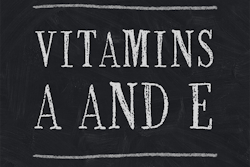
When I was studying for my MSc degree at Kansas State University, vitamins for animal diets were dirt cheap. Suppliers calculated the cost below 1 to 2 percent of total feed cost. So, when we were researching the concept of rationalizing their use, our research was derided as unimportant. They were wrong back then, and they remain wrong today.
First of all, in the business of animal raising, where profits are measured in dollars, if not cents, per animal, a margin — any margin — of 1 percent is not insignificant, especially if it can stay in your pocket instead of being wasted. Of course, animals should receive their full complement of vitamins and all other nutrients, but wastage is a different approach!
Question each individual safety margin.
Today, we see vitamins like E and A being dramatically expensive. Some believe their prices will come down, but others in the know realize that the few players who control the market will not be happy to see low prices again. The same is true for products related to these vitamins, such as carotenoids and natural vitamin E.
For reasons unrelated to the above, vitamin C is expected to become expensive as the Chinese appear more and more concerned about the impact of such industries on their environment. Other vitamins produced there, and elsewhere, will keep increasing in price. Environmentalism is not without its cost.
Thus, following the blog of last week, I return with another piece of advice: Please, discuss with your nutrition professional the current levels of vitamins used in your animal feeds. Ensure these meet minimum requirements, and question each individual safety margin. If one vitamin is heat-sensitive, but you do not expose your feed in high temperatures, then there is no need for a margin of safety for this purpose!

















